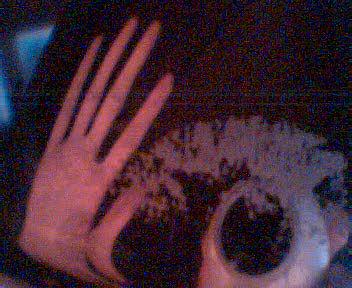Week 4
- Practical 1 - Audio Arts - Recording a Guitar [1]
Before one begins to start placing mics, there are a couple of things one should consider when deciding the type of sound one want:
String Configuration.
String placement.
Player habits or clothing that may interrupt.
- Keys, belt, etc.
Guitar DI.
- EQ'ing.
- Battery
Acoustics.
Pick selection.
- Hard, soft.
If recording solo guitar it's good to use an Omni polar pattern to the get full colour of the guitar. Cardioid can work just as well, and is preferable if recording in a group environment. You may even decide to just use the DI and scrap the mikes depending on bleed levels.
Recording near the neck gives a thinner and slappier sound. Recording near the resonant chamber (slightly off centre) gives a cleaner and fuller sound. Another technique that we explored was the over-the-shoulder technique which is suppose to mimic the sound of what the player hears. We discovered that out of all the techniques, a combination of the mic near the resonant chamber, and another near the fret board produced the best of both worlds giving some slap, but also a full sound.
- Practical 2 - Creative Computing - Supercollider (1) [2]
The first half our lesson this week included learning the definitions of a number of Supercollider terminology including long, int, double, float, string, and bytes.
We also talked about what the Open Sound Controller (OSC) - not to be confused with One Side Clean Bins [3]. The OSC forms the communication engine behind Supercollider.
We talked about the server architecture and how if the internal server is used, a crash stops the audio, but if a local server is used the audio continues to flow.
After reading this weeks tutorial by Scott Wilson, my understanding of the language is starting to come together.
I'm finding the language a lot more complex than Max/MSP, but that's probably because it just encourages a different way of thinking (which is a good thing). I know that if I can get my head around this new way of thinking, Supercollider can become a powerful tool for me.
- Music Technology Forum - Workshop - Composers from "Bang in a Can" and Overview of David Harris [4]
The first hour of this workshop was dedicated to a number of composers that were part of the "Bang in a Can" group that formed in 1987. Evidently they were also all involved with Yale University at some point in their lives.
The first piece we heard was "Surf music II" by Jack Vees; a generative piece of music containing guitar(s) put through a number of effects units. Interesting, but it didn't overly impress me. The second piece was "Fog Tropes II" by Ingram Marshall. It was an intriguing subtle string/electro composition.
We listened to a piece by David Lang called "Sweet Air", but I can't quite remember how it goes so I don't have anything to say about it.
The last piece we were assaulted with was "Trance IV" by Michael Gordon. This one was definitely the most resonant with my musical tastes, and it reminded me of a Reich influenced sort of minimalism.
For the second hour of our workshop we listened to some of David Harris' pieces. From what I remember about his life, a large proportion of it was spent studying minimalist music that produced maximalist results. He was also part of many organisations and events, one of which was ACMA.
First of all, I have to say that I have heard other pieces written by David Harris that I have thoroughly enjoyed, but to be honest, none of the pieces he presented during this class really resonated with me. Nevertheless, these pieces were great examples of music experimentalism.
The first one was "Impossible 14", written for 2 Violinists. The second piece was a violent sounding piano piece that was intentionally an exploration of harmonics. The last piece he played was a piece written for Pierre Boulez, although unfortunately I can't remember what it was called. It was quietly calming atonal piece for the piano.
- References
- [1] Grice, David. 2006. Practical on Recording a Guitar. University of Adelaide, 21 March.
- [2] Haines, Christian. 2006. Overview of Supercollider . University of Adelaide, 23 March.
- [3] Harley, Gabe. 2005. "What are OSC Bins?". Students for a Greener Berkeley. Accessed on 25/03/06.
- [4] Harris, David. 2006. Workshop on the composers from "Bang in a Can", and an overview of David Harris. University of Adelaide, 23 March.

